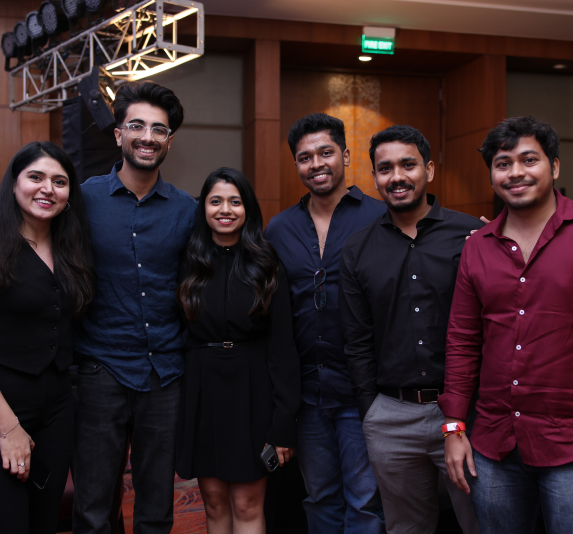The success of any D2C business hinges on one key pillar – cut the middleman. This is exactly what Siddharth Dungarwal did at Snitch.
And Siddharth cut the middleman so well that Snitch:
- has grown to INR 400 Cr in 3 years
- is posing serious competition to international giants like Zara and H&M
- has already taken 2.4% market share in fast-fashion that’ll most likely surpass the INR 4 Lakh Cr mark by FY31
The Lightbulb Moment
It all started with a chance encounter in 2012 – Siddharth was left with excess fabric and no one to sell it to. He transformed the fabric into shirts, sold them to a retailer, and pocketed a handsome profit. This experience exposed a gap in the market – no brand was offering trendy, fast-fashion options for men.

The First Stitch By Snitch
Siddharth started with a B2B model, supplying clothes to retailers. And right when the B2B arm was creating magic for the brand, the unplanned happened. The pandemic hit.
Again, Siddharth was back to where it all began. He was left with excess inventory.
This is when Siddharth and his team of 4 people pivoted to a D2C strategy, leading to the birth of Snitch.
Focused on quality, affordability, and trendy designs, Snitch was an instant hit – who does not like premium-like products at affordable price points?
The Deal
It was exactly at this moment that Snitch featured on Shark Tank India. And who doesn’t remember that pitch? That deal? That All Shark Deal?
Not only was Siddharth able to bag an all-shark deal but also build an instant rapport with both sharks and viewers, grabbing national media attention.
The Magic Formula Of Snitch To Success
“A satisfied customer brings in 5 more, but a dissatisfied one could drive away 100,” quoted Siddharth in an interview.
Snitch launched its mobile app and it was a game-changer. Within 3 months, downloads skyrocketed to 3.5 lakhs, leading to solid customer engagement and trimmed acquisition costs.
Adding an extra thread to its customer engagement playbook, Snitch continued to focus on:
- Affordable Fashion for the Masses: Snitch carved a niche in the mass-premium category, offering high-quality, trendy clothes at accessible prices. This strategy has fueled a consistent 30-35% QoQ growth for the past two years.
2. Staying Relevant: Snitch gauges customer response before scaling up production of any particular design, ensuring constantly updated collections.
3. Product Reselling Initiatives: Snitch allows customers to seamlessly resell their existing Snitch apparel for new ones. This way, Snitch has been able to offer discounts to existing customers and scaled its retention rates to about 50%
4. Affiliate Partnership With Customers: Customers could get reasonable discounts on Snitch products by simply posting a picture on their instagram stories and tagging the Snitch handle. This way Snitch has been able to turn customers into its brand ambassadors.
Instagram For The Win: Snitch has definitely cracked the Instagram game and drives massive traction there. They post viral content on the platform and have close to a million followers.
The Future of Snitch: Going Omnichannel
Snitch’s recent Series A funding of INR 110 Cr and expansion to over 8000 SKUs signal its aggressive growth plans.
After building a strong online presence, Snitch recognized the importance of physical touchpoints. With a target of achieving a ₹600 Cr GMV in FY24, it has strategically opened 13 offline stores across pincodes and focuses on scaling their offline presence to 40 new stores, creating a seamless omnichannel experience for their customers!
After all, the new age consumer wants it all and wants it now!







.svg)
.svg)





